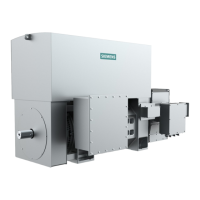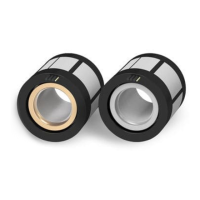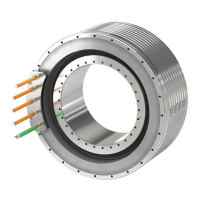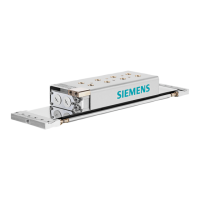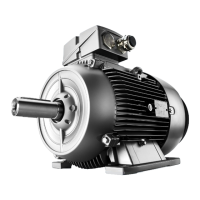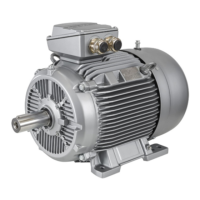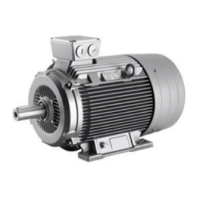for the external contacts required for the DC-side switching because the galvanic isolation of
the external contact is then no longer achieved.
NOTICE
Component damage resulting from a lower voltage
Sensitive electronic components (e.g. logic components) and mechanical contact elements
can also be damaged by the lower voltage.
• Make sure that the voltage does not fall below the specied value, e.g. due to insucient
conductor cross-sections.
AC connection
NOTICE
Impermissible overvoltages
If you operate the brake module without a snubber circuit in a circuit on the DC side,
impermissible overvoltages can arise.
• Use a snubber circuit.
• Avoid damage, e.g. due to contact erosion or contact welding of the external contact
elements by taking additional protection measures, e.g. varistors or spark suppression
elements.
Direct connection to an AC voltage is only possible via a rectier. Depending on the
connection method (DC or AC operation), dierent interlocking times can be achieved.
• Half-wave rectication
With half-wave rectication, the coil voltage U
2
is less than the input voltage on the rectier
by a factor of 0.445. Half-wave rectiers have a high residual ripple which have somewhat
shorter switching times compared to the bridge rectication, depending on the module size.
The half-wave rectier is therefore preferable (also because of the smaller coil voltages).
However, humming can occur in brake modules of small size.
• DC operation
With DC-side circuitry of the brake module, an additional auxiliary contact is plugged into the
motor contactor, which interrupts the current supply to the brake module on the DC side.
Electrical connection of brake modules with microswitches
Note
Use of microswitches
• Observe the special regulations regarding the permissible use of microswitches, e.g. for
lifting gear and crane construction.
Motor components and options
5.2Options
1PH8 SIMOTICS M main motors
Conguration Manual, 12/2022, A5E51895839A 191
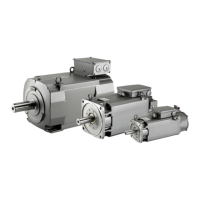
